FAH207 - Greek Classical Period
1/9
There's no tags or description
Looks like no tags are added yet.
Name | Mastery | Learn | Test | Matching | Spaced |
|---|
No study sessions yet.
10 Terms
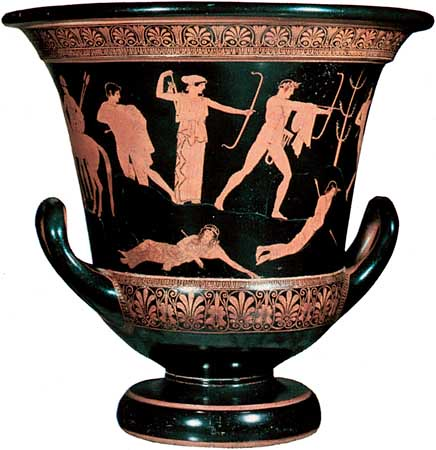
Greek Classical Period (ca. 480-450 BCE)
Niobid Krater
ca. 460 BCE
Material: Terracotta
Notes:
Red Figure Pottery
A lot more details
Apollo and Artemis killing Niobe’s children
Attempt to bridge both a foreground and background
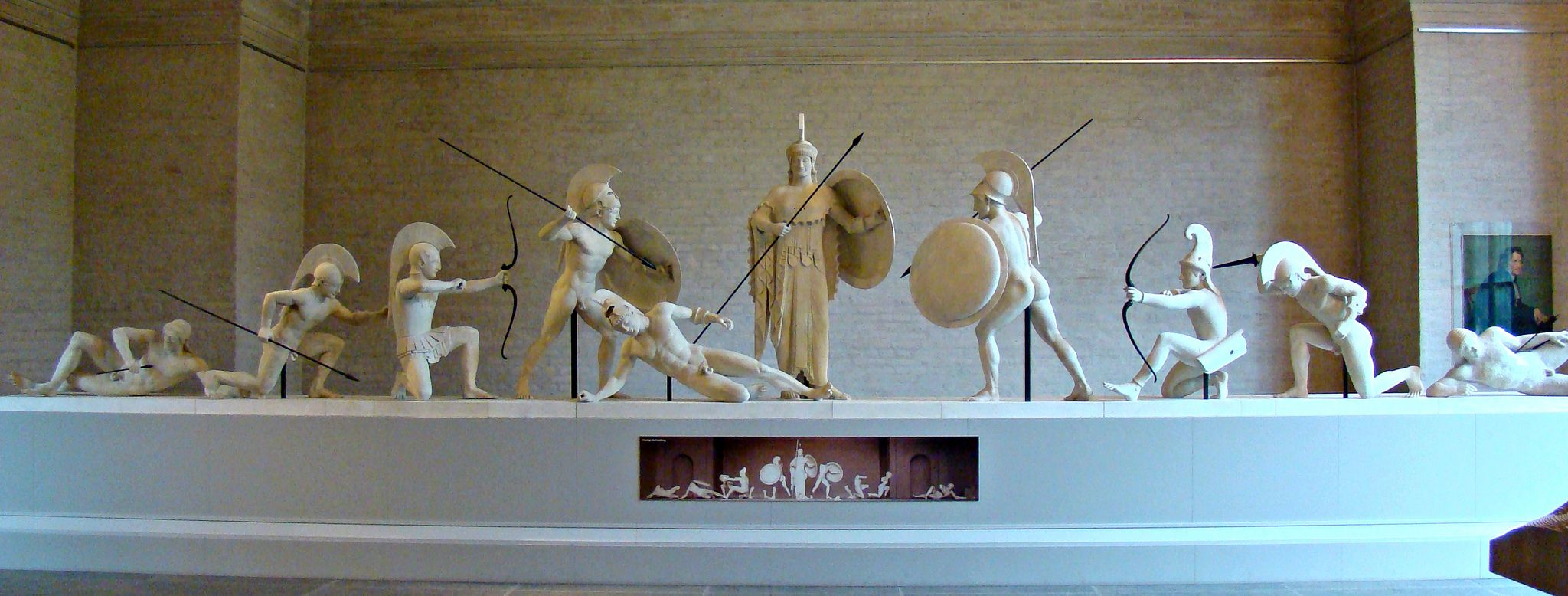
Greek Classical Period (ca. 480-450 BCE)
Temple of Aphaia at Aigina
ca. 470 BCE
Material: Limestone
Notes:
West Pediment ~490 BCE
- Scale is larger in the center and gets smaller as we go left and right
- See scenes from the Trojan War
- Can ID the archer as Paris due to the stance being taken, not wearing Greek clothes
- Central figure, goddess Athena, stance and holding a spear, stylistically of that of a Kore, archaic smile
- Fallen warrior, in a lying position and grasping an arrow that is in hid chest, everything is still frontal in archaic style,
East Pediment ~470 BCE
- Collapsing Warrior, lying face down and propping himself up with the shield, more defined muscles and bone structure, attempt to show naturalistic body
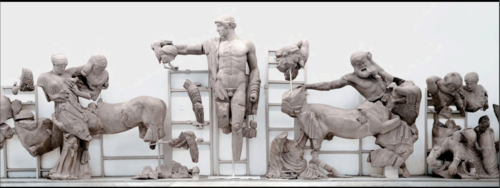
Greek Classical Period (ca. 480-450 BCE)
Temple of Olympian Zeus
ca. 460 BCE
Material: Marble
Notes:
Severe Style
- Neutral face
- Typical Greek sculpture with the large protruding lips, long, slender nose, and more natural eye with a slightly thinker eyelids
Six Traits of the Severe Style
Severity/Simplicity of forms
Emphasis on a few elements
Change in drapery and treatment of the fabric
Change in the subject matter: increase of characterization
Interest in emotion
Predominant use of bronze
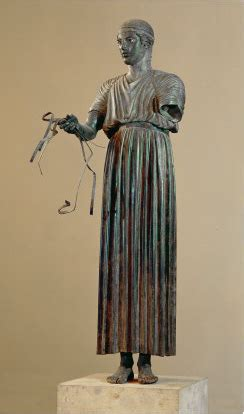
Greek Classical Period (ca. 480-450 BCE)
Charioteer of Delphi
ca. 460
Material: Bronze
Notes:
Victory monument for a chariot race
Very long legs and short torso, needed to stand higher up on the chariot so lengthens the legs
Lots of focus on anatomical detail
Used an onyx gemstone and faience (glass) to give the eyes a more life-like presence
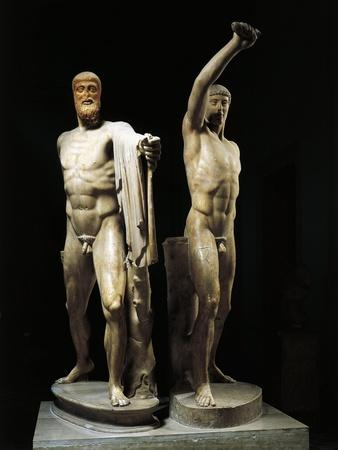
Greek Classical Period (ca. 480-450 BCE)
The Tyrannicides
ca. 477 BCE
Material: Bronze
Notes:
The “Tyrant-Killers”
The Heroic Nude
- Harmodius (Eromenos) younger, sword up
- Aristogeiton (Erastes) older, Chlamys, sword up
Historically inspired myth-making centered around Athens and its institutions
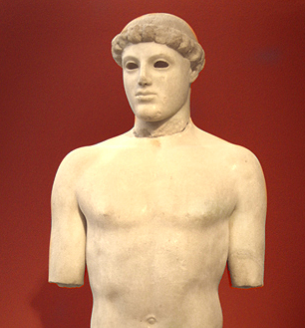
Greek Classical Period (ca. 480-450 BCE)
The Kritios Boy
ca. 475 BCE
Material: Marble
Notes:
Kouros
Hip adjustment forces the knees, obliques, and shoulders to adjust and rebalance
The buttocks adjusts how the muscles pinch and relax for the stance
Contrapposto → describes a figure standing with most of its weight on one foot
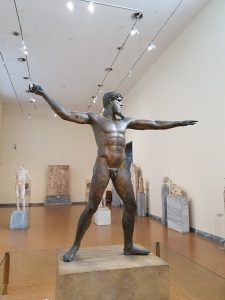
Greek Classical Period (ca. 480-450 BCE)
Artemision Zeus or Poseidon
ca. 460-450 BCE
Material: Bronze
Notes:
¾ perspective to provide a more realistic dimensions from a certain view
Feet are not planted
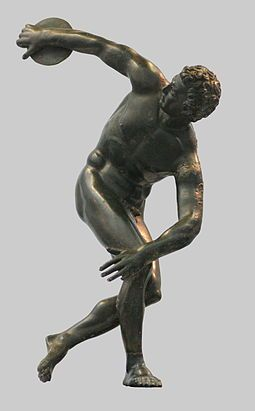
Greek Classical Period (ca. 480-450 BCE)
Diskobolos
ca. 450 BCE
Material: Bronze
Notes:
Wound up to through a discus
An early attempt at torsion and balance
Chunking of the body, top and bottom are not in unison
Legs are in an athletic pose where as the torso are in tension
Placid face not having any struggle while the body is flexing and tensing
Adding a strut to provide strength to the marble (Roman copy)
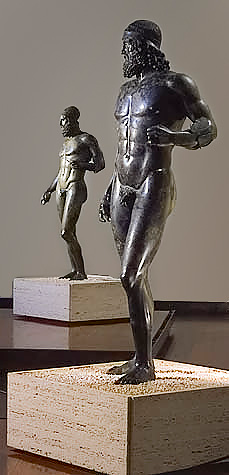
Greek Classical Period (ca. 480-450 BCE)
Riace Bronzes
ca. 460-450 BCE
Material: Bronze
Notes:
Contrapposto in both A and B